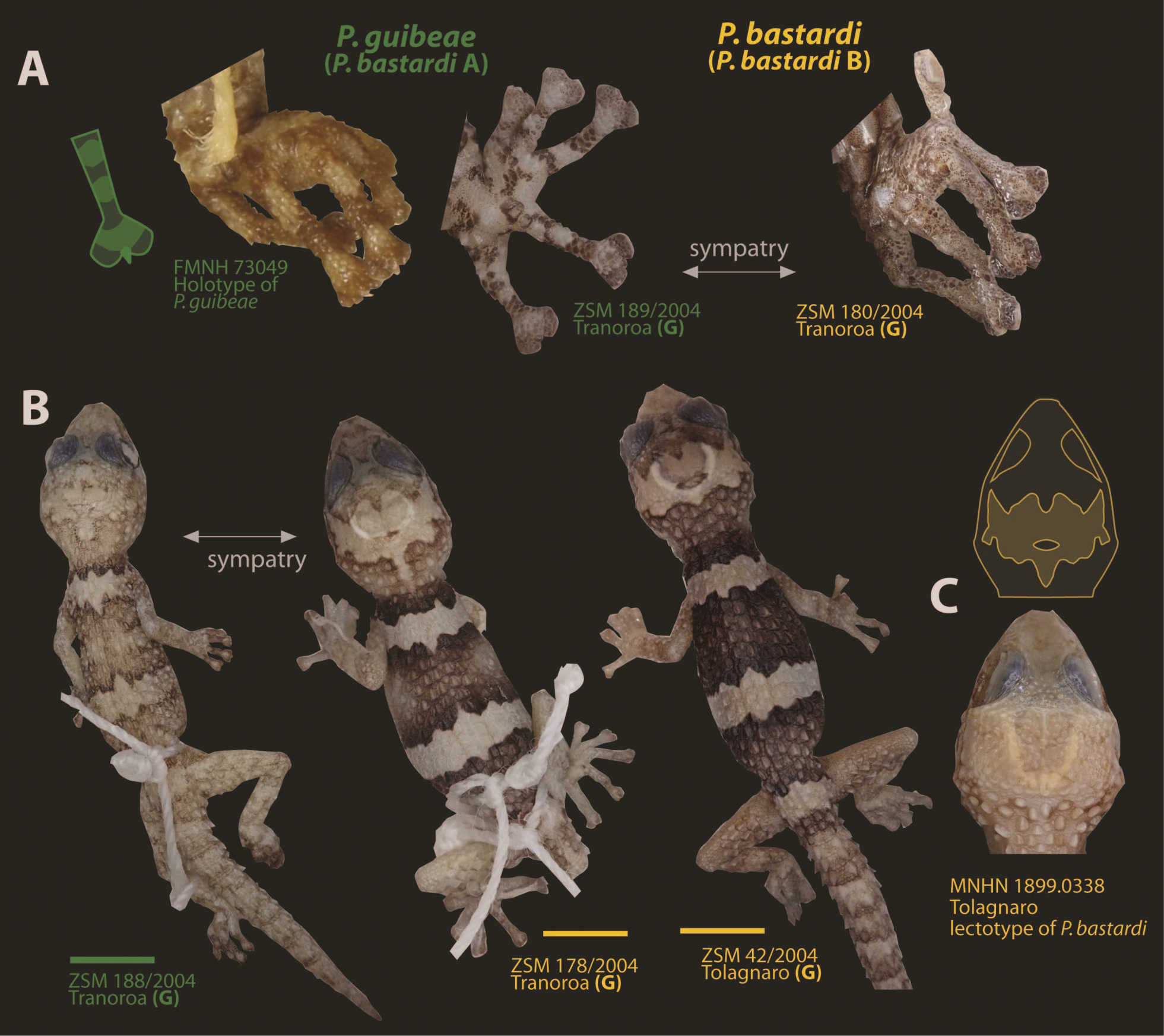
|
||
|
Differences in coloration between juveniles of lineages provisionally named P. bastardi A and P. bastardi B (corresponding to the species P. guibeae and P. bastardi, according to the taxonomic hypothesis proposed herein), with a special emphasis on those from Tranoroa. A Digit coloration. Juveniles of P. bastardi A present a very characteristic banded pattern on fingers and toes (finger schematically represented in green). The same pattern is also present in the holotype of P. guibeae, and this name is therefore assigned to P. bastardi A. B Juvenile of P. bastardi A showing a dull dorsal coloration, whereas the juveniles of P. bastardi B show a highly contrasted pattern color consisting in a dark brown dorsal background with two very light transverse bands. C Detail of the dorsal side of the head of the newly designated lectotype of P. bastardi (above, a schematic drawing represent the “butterfly” pattern characterising juveniles of P. bastardi B, which is also present, although hardly distinguishable (probably faded) in the lectotype of P. bastardi). Scale bars = 5 mm. Genotyped specimens are marked by the letter (G). Photo credits: FMNH 73049 ©Field Museum of Natural History. Created by Field Museum of Natural History, Amphibian and Reptile Collection and licensed under CC-BY-SA 4.0; all other pictures taken by AM. |